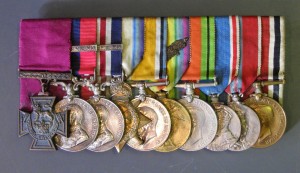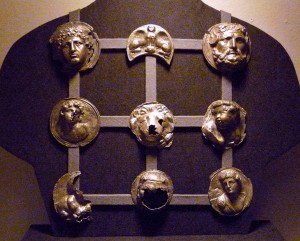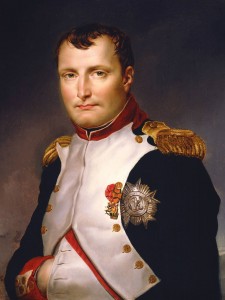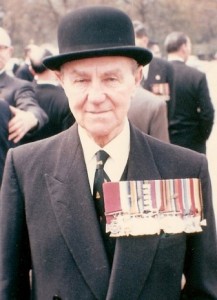Recognizing Bravery
The Ordinary with the Extraordinary
All nations have their awards and many of these symbols of valour (valor), honour (honor), bravery, and courage are well known. They take on many names such as the Victoria Cross, the Légion d’Honneur, Croix de Guerre, Ritterkreuz (Iron Cross), and the Medal of Honor.
In earlier times, gallantry was recognized by the Romans (circa 753 BC – AD 476) with the presentation of gold necklets called Torcs, gold armbands known as armillaies and ornamental discs called phaleraes. These gold, silver or bronze discs, worn on parades, were mounted on the recipient’s breastplate. The Greek historian, Polybius, circa 200 – 118 BC, wrote about these awards:
“After a battle in which some of them have distinguished themselves, the general calls an assembly of the troops, and bringing forward those whom he considers to have displayed conspicuous valour, first of all speaks in laudatory terms of the courageous deeds of each and of anything else in their previous conduct which deserves commendation“. (Polybius)
Many years later it is recorded that Napoleon Bonaparte said of his troops, “A soldier will fight long and hard for a bit of colored ribbon”. France’s Legion d’Honneur (Legion of Honour) was introduced in 1802 and by comparison, Napoleon’s British opponents of that era had no gallantry awards available to them, save a few Orders granted to officers. It was not until the Crimea War (1854-1856) that the British introduced the Distinguished Conduct Medal (DCM) in 1854 and soon followed by the Victoria Cross (VC) in 1856. As more thought was ascribed to the valour of sailors and soldiers in action more awards were developed such as the Conspicuous Gallantry Medal (CGM) in 1874, the Distinguished Service Order (DSO) in 1886 and the Conspicuous Service Cross (CSC) in 1901.
During the Great War several new awards were created by the British. Based on a tiered system, generally respective of field of service and frequently governed by individual rank. These new awards, introduced when the nature of warfare was greatly changing, recognized the requirement to provide additional recognition to service personnel in combat. There were circumstances whereby awards crossed over between services and naval personnel were granted awards generally available to the army and vice versa. With the creation of the Royal Air Force (RAF) in 1918, the new RAF soon saw the development of its own awards.
These new Great War awards included the renamed Conspicuous Service Cross, henceforth known as the Distinguished Service Cross (1914), the Distinguished Service Medal (1914), the Military Cross (1914), the Military Medal (1916), the Distinguished Flying Cross (1918) and the Distinguished Flying Medal (1918). Several of these awards were discontinued in 1993 when the older awards, the DCM and the CGM, as well as the DSM, MM and DFM were removed from the British system. At that time there was a desire to make available a series of awards available to all ranks rather than to continue with a system frequently based upon rank. As a result the DSC, MC and DFC were made available to all ranks as was the new Conspicuous Gallantry Cross (1993).

The awards and other medals of William Harold Coltman VC, DCM and Bar, MM and Bar, North Staffordshire Regiment. The bars indicate second awards.
Many nations, outside the United Kingdom, discontinued the award of the Victoria Cross, creating their own series of national awards. However, the Victoria Cross’ cachet and the desire to re-implement tradition has meant that the Victoria Cross, has been reintroduced by several nations in recent years. Due to the present nature of conflict recently in Iraq and Afghanistan both Australia and New Zealand have presented their own awards of the Victoria Cross whereas Canada which also introduced its own Victoria Cross has not.
In 1986 Lord Michael Ashcroft began his collection of Victoria Cross awards by acquiring, through public auction, the 1945 Victoria Cross awarded to James Magennis a diver aboard the Royal Navy’s midget submarine HMS XE3. Having amassed a large collection, now on rotating exhibition at the Imperial War Museum, London, England, Lord Ashcroft’s collection includes two Canadian Great War awards to Alexander Brereton VC (8th Canadian Infantry Battalion awarded for an August 9, 1918 action east of Amiens, France}, and Thomas Dinesen VC (42nd Canadian Infantry Battalion for an August 12, 1918 action at Parvillers, France). Among the awards on display in the Lord Ashcroft Gallery, opened in 2010, are those acquired by the Imperial War Museum and included among them is the Victoria Cross awarded to Lieutenant “Jackie” Smyth VC, MC of the 15th Ludhiana Sikhs, Indian Army.
In 1973 Sir John “Jackie” Smyth wrote “When King George V decorated me with my V.C. in July 1915 he gave me a very cheap little cardboard box (which I still treasure) to go with it, saying: ‘I give you this highest decoration of all in this very ordinary box so that the intrinsic value of the medal and the box shall not be more than one penny.’”
I recall when I first read this short mention of “Jackie” Smyth’s award and how these few lines have remained with me for all these days. So too do I recall my first visit to the IWM where upon seeing the Smyth award in the VC & GC (George Cross) Gallery how I was taken back to his writing. Somehow it is a reminder to me, forever anchored in my being, and although I cannot actually define this reminder it may be about the modesty of the recipient, a combination of humility, the ordinary with the extraordinary.




Comments